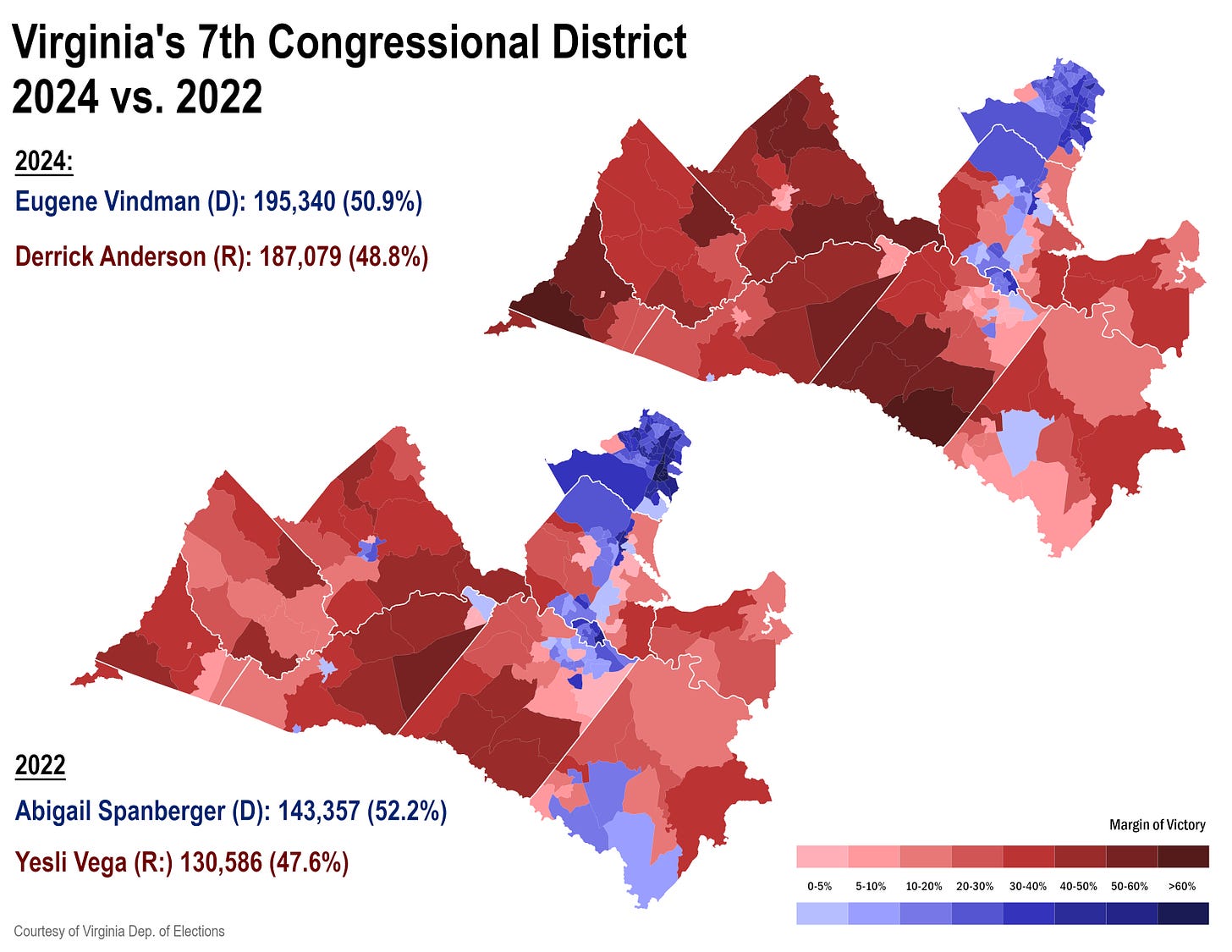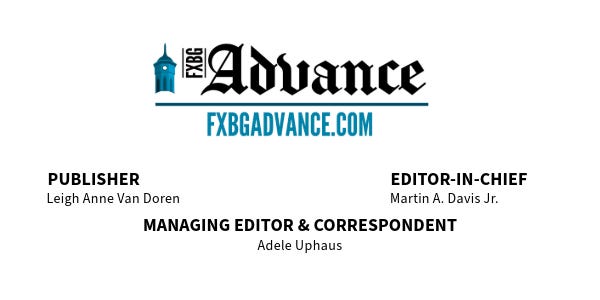Second-wave Population Shifts Carry Vindman in Seventh
Republicans face a challenging future in a district where newcomers living near the interstate and VRE stations, are less moved by culturally conservative messaging.
By Stephen J. Farnsworth and Anders Barretta
GUEST ANALYSTS
Virginia’s sprawling Seventh Congressional District, which includes all or part of ten counties and the City of Fredericksburg, was one of the most sought-after congressional prizes nationally this year. It was one of a dozen or so districts situated largely in outer ring suburban counties, which comprise the borderlands between Blue metropolitan areas and the Red rural counties. These are largely purple locations where congressional majorities are won and lost in America.
Virginia Seven, once again, did not disappoint.
Preliminary final results show that first-time candidate Eugene Vindman (D) was elected by a 51-49 percent margin, making it one of the closer congressional elections in the nation. It was even a little closer than the campaign for the seat two years ago, when Abigail Spanberger won the district, then newly drawn following the 2020 Census, by a 52-48 percent margin.
Vindman’s victory came on the heels of more than $13 million spent to promote his candidacy, more than six times the amount Republican Derrick Anderson spent this fall. Those figures, compiled by the Virginia Public Access Project, only cover expenses through mid-October, so the race will end up being even more expensive when the final numbers are tabulated. Republicans sought to win the seat with campaign appearances by U.S. House Speaker Mike Johnson and Virginia Gov. Glenn Youngkin.
Vindman lost ground compared to Spanberger in every jurisdiction in the Seventh except Stafford County, where his 49 percent of the vote was slightly better than the 48 percent share the Democratic incumbent received two years ago. Generally, though, Democratic declines in other parts of the district were modest regardless of whether they were red or blue jurisdictions – Vindman won 45 percent of the vote in Spotsylvania County and 65 percent of the vote in Fredericksburg City. Both were within 1.5 percentage points of Spanberger’s slightly higher margins in both places two years ago.
Anderson’s combative conservative message worked well in parts of the district, particularly in areas further from the Interstate 95 corridor, locations where Republicans dominate. Anderson’s strongest gains were found in the western parts of the district, including Culpeper, Orange, and Madison counties and the sliver of Albemarle County located in the Seventh District. These areas are all places where Republicans have long received more than 60 percent of the vote in election after election.
Unfortunately for Republicans, roughly one-third of the district’s vote is in Prince William County, the most pro-Democratic portion of the district.
Much more change occurs in areas with significant population increases in recent decades, as has been the case in areas close to Interstate 95 and the Virginia Railway Express and Amtrak commuter lines. The first wave of suburbanization, which our area experienced decades ago, often involved people leaving the cities in search of more conservative suburban communities. But the current, second wave of suburbanization is quite different – it involves people relocating in search of more affordable housing close to major highways and mass transit.
These second-wave suburban population shifts are less about seeking a conservative refuge from more-urban areas than they once were, and these recent transplants are less likely to be Republican.
The two maps that accompany this column can help tell this story of shifting electorates in our region. Both compare the District Seven results by precinct in the past two cycles. The darkest red areas identify the most pro-Republican jurisdictions in 2022 and 2024, while the darkest blue areas mark those most supportive of Democratic candidates.
The Prince William County precincts at the northern edge of the Seventh District are largely dark blue, as are precincts of Fredericksburg City and the Stafford and Spotsylvania precincts closest to the city and Interstate 95.
Most of the precincts in the Seventh District are red, and many are deep red, as befits the long-time Republican advantages in the district’s less populated counties, including King George, Culpeper and Orange. Many of these more-rural precincts, areas more distant from the second wave of less partisan suburbanization along I-95, are about as Republican as they were a decade ago – and some are even more Republican than they used to be.
This Seventh District analysis illustrates the challenges faced by Republicans in our region going forward: the party’s continued success depends on connecting more effectively with voters closer to the I-95 corridor, particularly the newly arrived voters who aren’t swayed by the culturally conservative messages that continue to resonate so effectively in places like Orange, Culpeper and King George.
—
Stephen J. Farnsworth is professor of political science at the University of Mary Washington, where he directs the Center for Leadership and Media Studies. Anders Barretta is a senior political science and geography double major at UMW.
Local Obituaries
To view local obituaries or to send a note to family and loved ones, please visit the link that follows.
Support Award-winning, Locally Focused Journalism
The FXBG Advance cuts through the talking points to deliver both incisive and informative news about the issues, people, and organizations that daily affect your life. And we do it in a multi-partisan format that has no equal in this region. Over the past year, our reporting was:
First to report on a Spotsylvania School teacher arrested for bringing drugs onto campus.
First to report on new facility fees leveled by MWHC on patient bills.
First to detail controversial traffic numbers submitted by Stafford staff on the Buc-ee’s project
Provided extensive coverage of the cellphone bans that are sweeping local school districts.
And so much more, like Clay Jones, Drew Gallagher, Hank Silverberg, and more.
For just $8 a month, you can help support top-flight journalism that puts people over policies.
Your contributions 100% support our journalists.
Help us as we continue to grow!















Thus have Soros and Bloomberg bought another election.